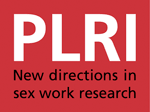trafficking; myths
Over the last decade, researchers and legislators have struggled to get an accurate picture of the scale and nature of the problem of human trafficking. In the absence of reliable data, some anti-prostitution activists have asserted that a causal relationship exists between legalised prostitution and human trafficking. They claim that systems of legalised or decriminalised prostitution lead to increases in trafficking into the sex industry.

